Tag: place names
Venice place names: Campi, Campielli, Corti
In Venice there are no streets but calli (with a few exceptions, as we learned here), and it’s just the same for the squares: if you hear about “square”, you can’t help to refer to St. Mark’s Square, the one and only square in Venice.
All the other areas of the road network that in the rest of the world are called squares, in Venice are called Campi (Fields).
On ancient times the campi, as the term suggests, were covered with grass and used for cultivation, with orchards and fruit trees, and sheeps or horses could be found grazing there.
Only recently the campi have been paved, but there is still a testimony of what the fields should look like on the days of the Serenissima: to see it just visit the Campo di San Pietro di Castello, with its meadows and trees.
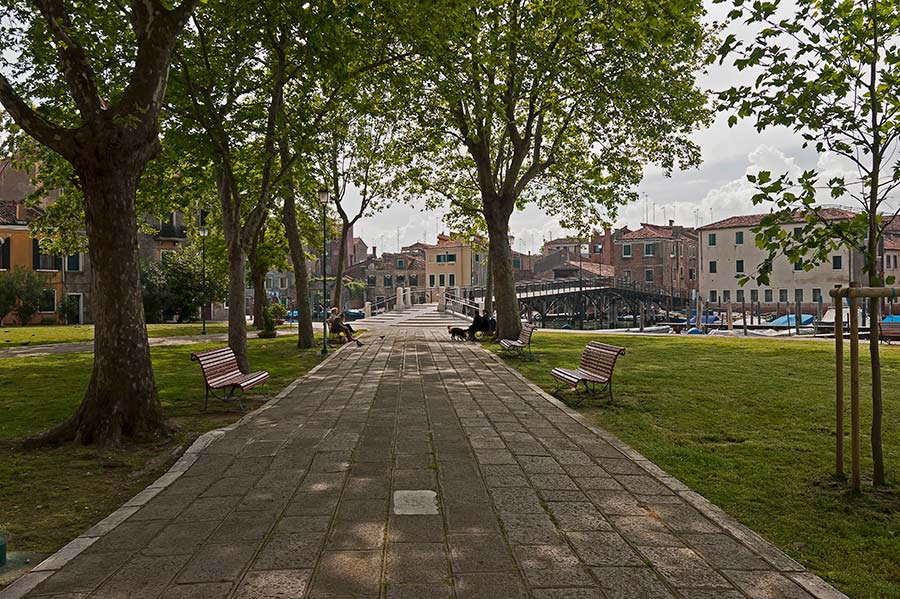
San Pietro di Castello
The social meaning of the campo has always been very strong, since Venice is a polycentric city, built on numerous islands that lived a life of their own.
The open space surrounded by houses was a meeting place for the inhabitants, a place where there was a market and overlooked the craft shops.
On the campo there was always a church, with an adjoining cemetery; the function of the campo as a burial place is still indicated in some cases with the presence of an elevated area more than a meter above normal traffic (Napoleon then banned the practice of burial in the campi, moving the cemetery to the current island of San Michele).
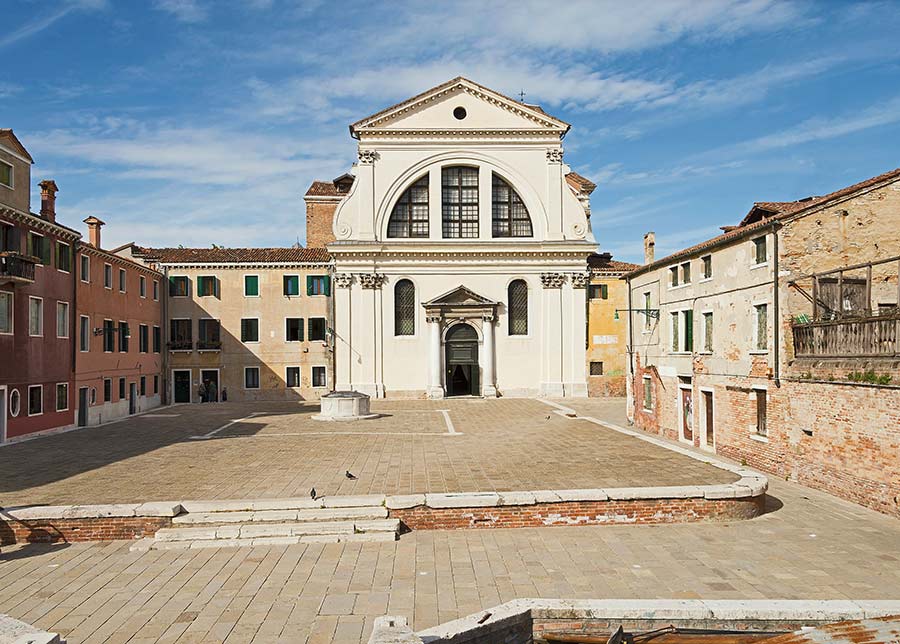
Campo San Trovato and the former cemetery
In the larger campi there were also processions and religious events, as well as tournaments and public speeches.
Even in much more recent times, the campo has been (and still is, even if the depopulation of Venice dramatically has its strong impact) the meeting place of children who played mainly football or other games, such as jumping the rope or going on skates.
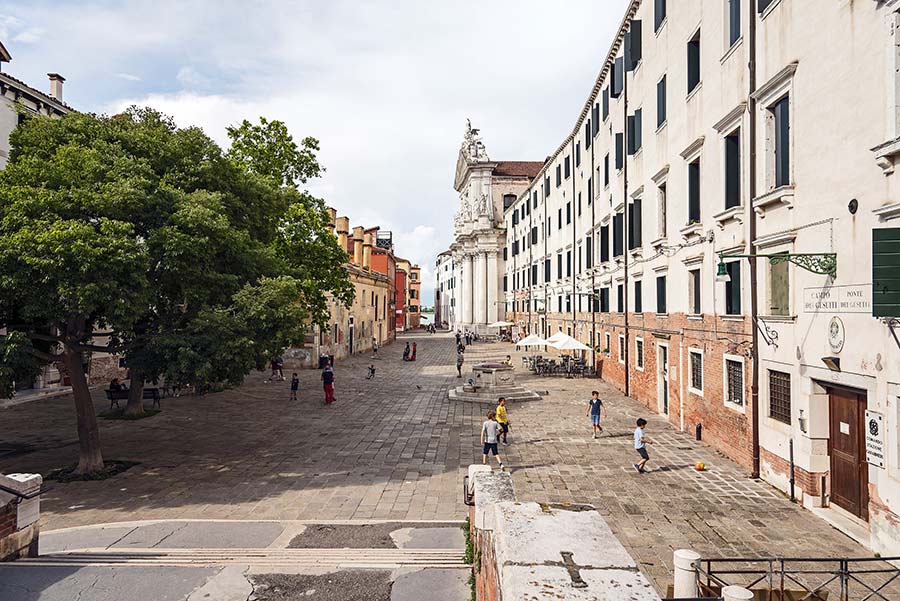
Campo dei Gesuiti with children playing football
The well was another inevitable figure in every campo, and it was the only source of water for the city, before the construction of the aqueduct.
Fortunately you can still admire many real finely worked wells, even if unused (if you want to learn more about the functioning of the wells, read this article).
The campi often owe their name to the churches that rise (or rised) there, but also to important families who lived there or to trades that were carried out in ancient times.
When the campo is smaller than usual it is referred to it as Campiello (small field), which is often only a widening of the calle or an appendix to a larger field, and it is usually devoid of well and surrounded by houses.
In the campiello social life was even more typical, because it was just the center of a micro district, where the social fabric of the city was interwoven, with gossip, quarrels and the popular chatter of a lively and crowded city. Carlo Goldoni in his comedy “Il campiello” tells just these habits.The importance of the campiello is also testified by the name given to the important literary prize “Il campiello”, one of the most prestigious and well-known Italian literary prizes.
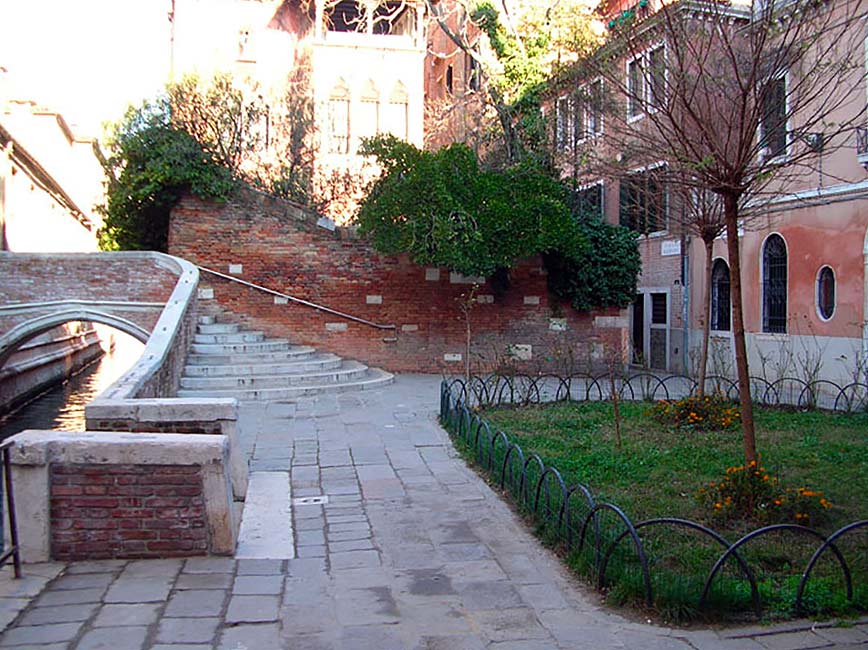
Campiello
Even smaller than the campiello is the Corte (courtyard), which usually has only one entrance through a portico or a street sometimes equipped with a gate. In fact, the corte was considered an extension of the house, where you could find women who, during the summer, sitting next to their door, engaged in housework activities such as cleaning fish and vegetables, sewing and embroidery, and the practice of inserting beads into a thread for the manufacture of necklaces, a typical activity that in dialect is called “impiraperle”.
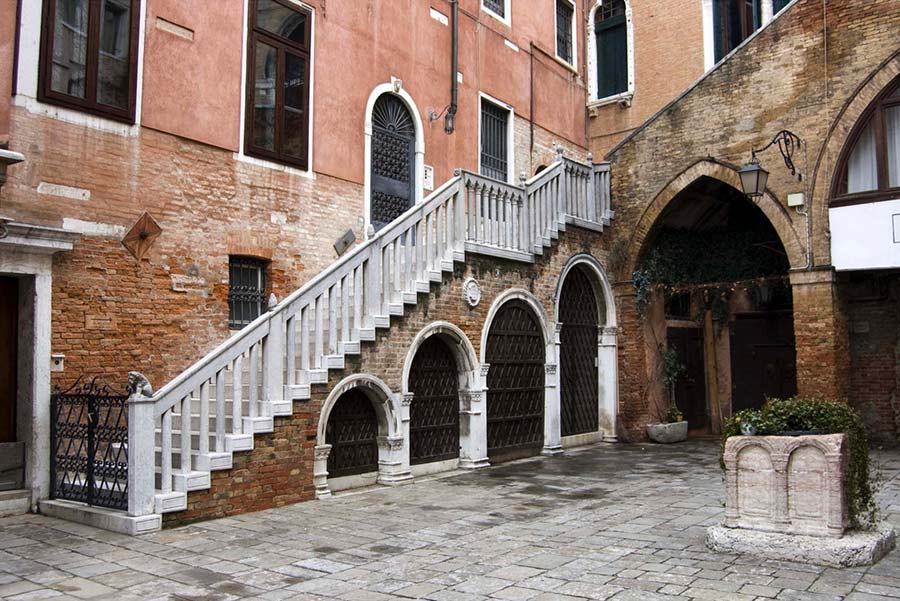
Corte
Sources
https://venicewiki.org/wiki/Campo
https://www.innvenice.com/Toponomastica-Venezia.htm
https://venipedia.it/it/campi
https://it.wikipedia.org/wiki/Campo_(Venezia)
https://it.wikipedia.org/wiki/Campiello
https://it.wikipedia.org/wiki/Corte_(Venezia)



 Venice place names: Campi, Campielli, Corti
Venice place names: Campi, Campielli, Corti  Venice place names: Calle, Calle Larga, Salizada, Rio terà, Ramo, Sotoportego
Venice place names: Calle, Calle Larga, Salizada, Rio terà, Ramo, Sotoportego  The Venetian “Fondamenta”
The Venetian “Fondamenta”  2 years and still going strong: happy birthday Plum Plum Creations!
2 years and still going strong: happy birthday Plum Plum Creations!  The Bicentenary of Gallerie dell’Accademia – Canova, Hayez, Cicognara
The Bicentenary of Gallerie dell’Accademia – Canova, Hayez, Cicognara